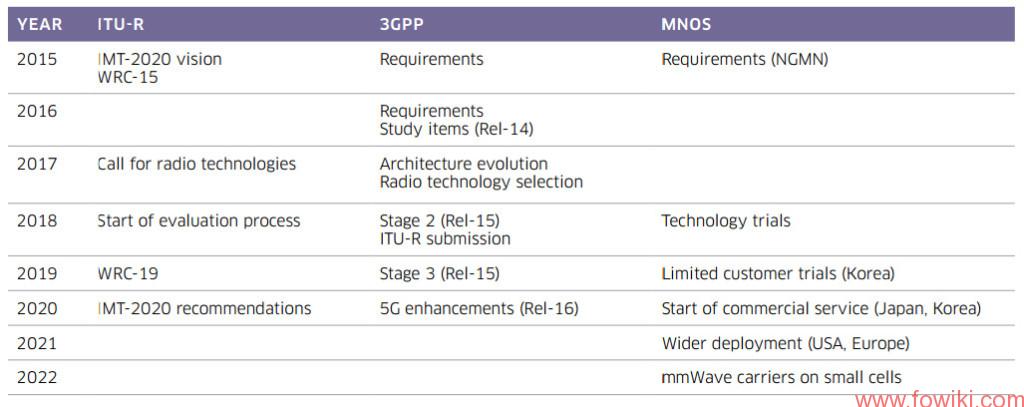Research work on 5G started about “ve years ago with significant research projects in Europe, China, Korea, and Japan. At the same time, ITU-R started working on setting the fundamental requirements for 5G, followed more recently by the NGMN, an operator pre-standards organization, with the release of its 5G White Paper at Mobile World Congress (MWC) 2015.
Moving forward, the 3GPP will start working on a more detailed set of standards for 5G. Their initial focus will be on setting requirements, followed by formal study items to baseline the architecture and radio technologies. This will lead to work items between 2017 and 2019 to define the complete 5G specification, resulting in the first release being issued as part of 3GPP Release 15.
In parallel ITU-R is expected to launch a formal call for candidate radio technologies for its IMT-2020 project and prepare for the critical World Radio Conference (WRC) in 2019 where new radio bands above 20 GHz are expected to be identified.
Mobile Network Operators (MNOs) are expected to hold technology trials in 2018 and limited customer trials in 2019, with early commercial 5G deployments starting in 2020-2021. Please refer to Table 2 for a time line of 5G standards and deployments.

Preparing for 5G
The path to 5G is a journey, not a destination. The more prepared one is, the easier the journey becomes. With 5G, preparation starts with the de”nition of the requirements. Operators should work with the NGMN to ensure their requirements for 5G are considered upfront. Participating in a 5G technology trial is another excellent way to get ready for 5G. Mobile operators who do so will gain an excellent understanding of how the technology works and what its limits are–making commercial deployments easier.
Also, since 5G will build on 4G LTE foundation technologies (including macro cells, small cells and WLAN HetNets, LTE Advanced (LTE-A) features such as CA, and NFV and SDN technologies, like vRAN and virtualized Evolved Packet Core (vEPC)), mobile operators should consider deploying these technologies sooner rather than later. For example:
• Small cells and WLAN provide more capacity and increase end users’ QoE today and secure sites for 5G tomorrow.
• LTE-A CA delivers higher LTE capacity by combining spectrum assets. With 5G, CA will enable additional higher band spectrum to augment traditional cellular spectrum to enable the delivery of massive capacity.
• vRAN and vEPC drives better scale, #exibility and performance. This will position mobile networks to handle the next big wave of traf”c expected with 5G.
Mobile operators should partner with a vendor who will deliver the capacity and #exibility they need to grow and evolve their 4G LTE network today, while having the multi-disciplinary capabilities, vision and leadership to guide them on their path to 5G.